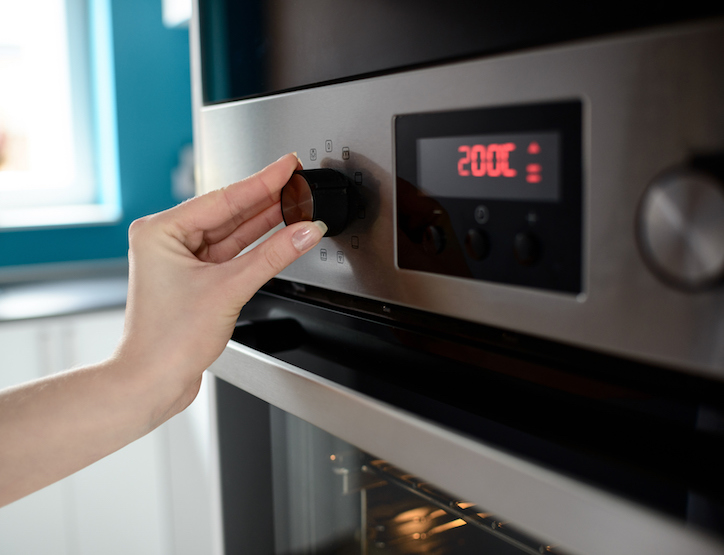
Finding the Best Approach to Home Appliance Prototyping
Innovation in major domestic appliances never stops. Manufacturers battle to attract savvy buyers with new features, improved efficiency and styling to match the latest trends in kitchen design. Speed to market is critical, putting product development teams under intense pressure to get prototypes into testing and in front of potential buyers. Materials and processes that shorten home appliance prototyping production time are a huge plus for appliance manufacturers.
Why Prototype?
With dishwashers, cookers, ranges, refrigerators and other appliances expected to last ten years or more, it’s imperative that new designs are durable. Functional testing identifies where design changes are needed, which then require a second round of validation testing.
An attractive appearance and good ergonomics are important for market success. Computer depictions have a role but there’s no substitute for using a real prototype to judge look and feel. Likewise, a prototype that’s true to design intent makes an excellent marketing tool. Placing it in a show kitchen enables one to capture consumer feedback and photos of the prototype can go into product literature.
Tooling
Modern appliances are complex assemblies of stamped metal, plastic moldings of various types, castings, glass, electronics and electrical assemblies. Home appliance prototyping demands the manufacturer procure all these components quickly, and waiting for tooling often adds substantial delays.
Injection molding tools, casting dies and stamping tools all suffer from long lead times. This is due to the hardness of the materials used, finishes required, and the need for changes after first article production.
Hardness is essential in production tooling to prevent wear from causing dimensional changes over long runs. The problem is that it forces the use of slow and expensive processes like grinding and electro-discharge machining (EDM). Then if changes are subsequently needed, modifications add yet more time to the tool manufacturing process.
Rapid Prototyping
Designers are increasingly turning to rapid prototyping (RP) methods based on additive manufacturing. Additive technologies are maturing and evolving rapidly but may not be the best solution for every aspect of home appliance prototyping.
For functional testing, components like handles and hinges must conform dimensionally to the print and be made from the material selected by the designer. Additive processes are limited when it comes to both precision and the materials they work with. Most need either specialized plastics or more exotic metals that won’t function like the production parts and often need secondary finishing operations.
Where additive techniques can contribute is in evaluating aesthetics and ergonomics, particularly since RP plastics are available in a range of colors. In a non-functioning oven or range, for example, additive techniques can produce plastic facsimiles of parts like burners, grates and knobs. However, many of these processes leave highly visible layers that need removing or covering.
One last limitation on additive processes to mention is size. Most additive machines have a working envelope not much bigger than a shoebox. Few really larger machines exist and those that do have high hourly costs.
Alternatives to Additive
Manufacturers should not overlook the benefits of using conventional processes, or a combination of both additive and conventional (a hybrid approach), for home appliance prototyping. More specifically, high-speed CNC machining provides a quick way of producing both appliance components and tooling.
Ideal for one-offs and low volumes, today’s CNC machine tools cut metals and plastics at high speed and with great precision. Multi-axis control over the cutting head allows one to produce complex forms while high spindle speeds and advanced cutting tools ensure excellent surface finishes.
One disadvantage compared to additive and net-shape techniques like casting and molding is low material utilization, but while this matters in volume component production, it’s seldom a concern for prototyping.
When molding or casting tools are unavoidable, perhaps for making complex plastic assemblies as are found in a refrigerator icemaker, CNC machining is a time-saving approach. In this case, though, it’s tied with the use of more machinable materials like aluminum rather than hardened steel for the actual tools. While these won’t have the life of fully hard tooling, that’s not a concern at the prototype stage where the priority is speed.
Hybrid Prototype Processes
Some casting and molding processes need patterns or inserts. Additive methods can be cost-effective ways to make these relatively small parts. After finishing, they can be incorporated into conventional tooling while saving money and time compared to making everything from tool steel.
Faster Prototyping
Manufacturers of dishwashers and similar products should look at their home appliance prototyping processes and reevaluate them for any potential competitive advantage. Many find partnering with a prototyping specialist that has appliance manufacturing expertise is an effective strategy. However, only one with deep knowledge of both conventional and additive processes can recommend the optimal approach for minimizing both time-to-market and cost.
